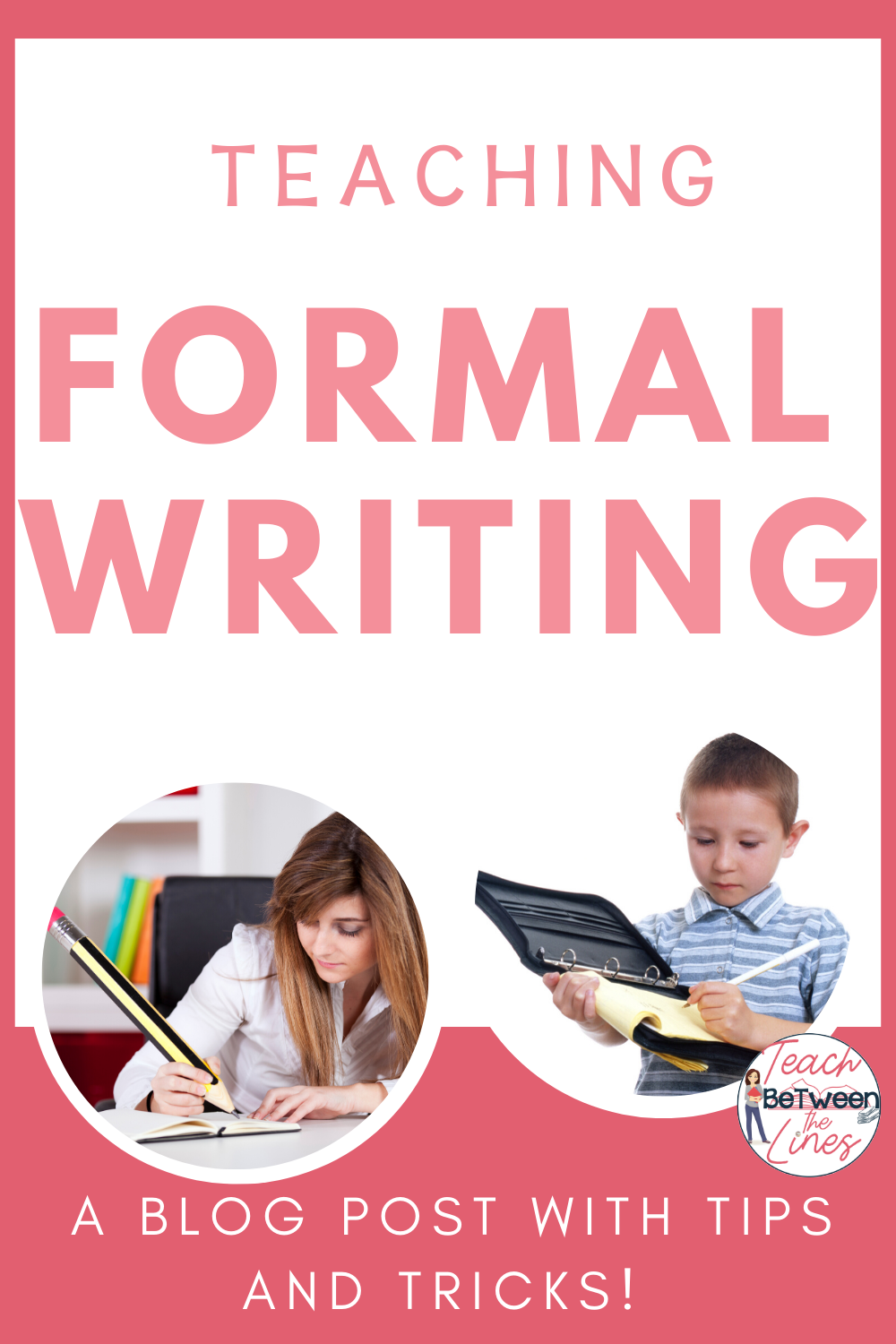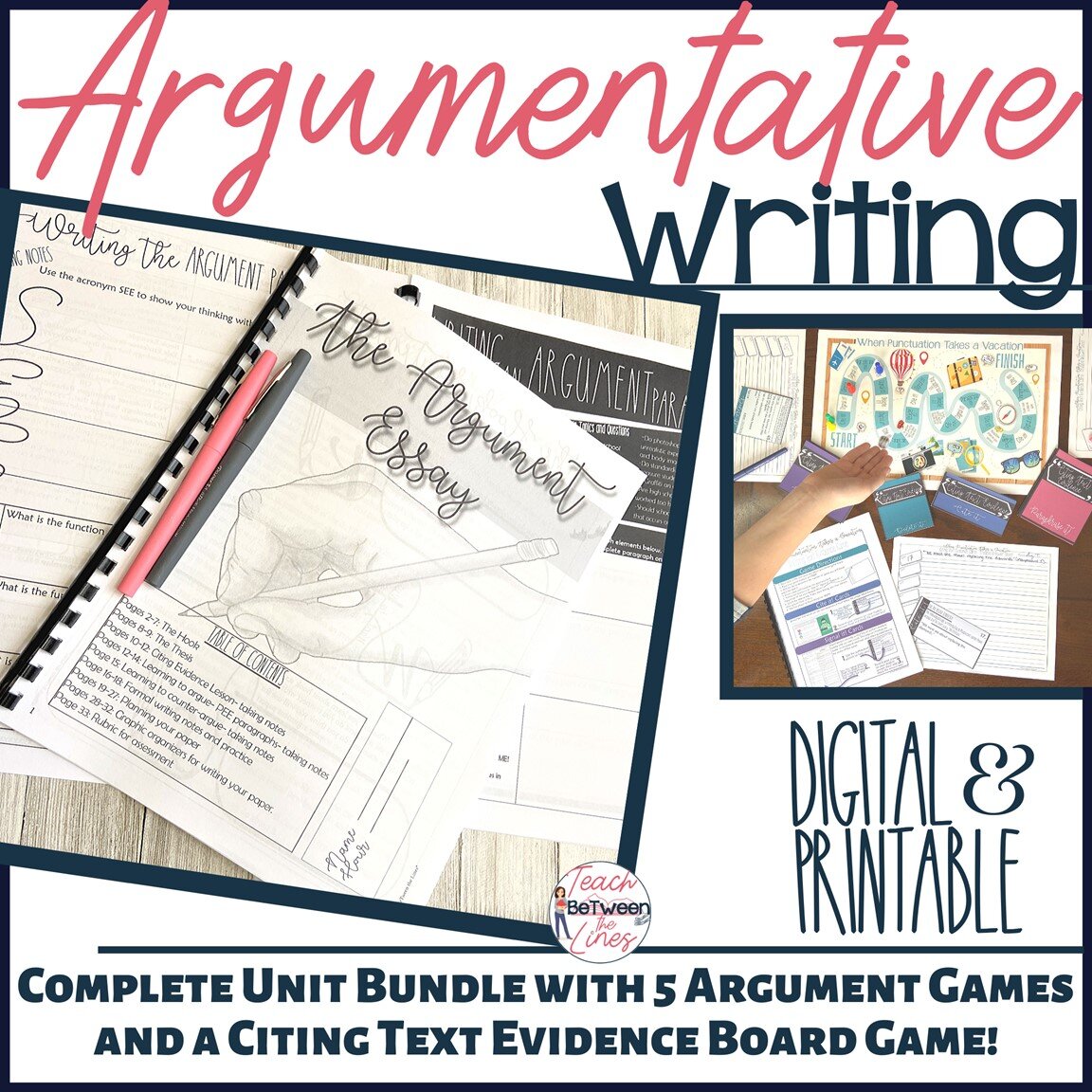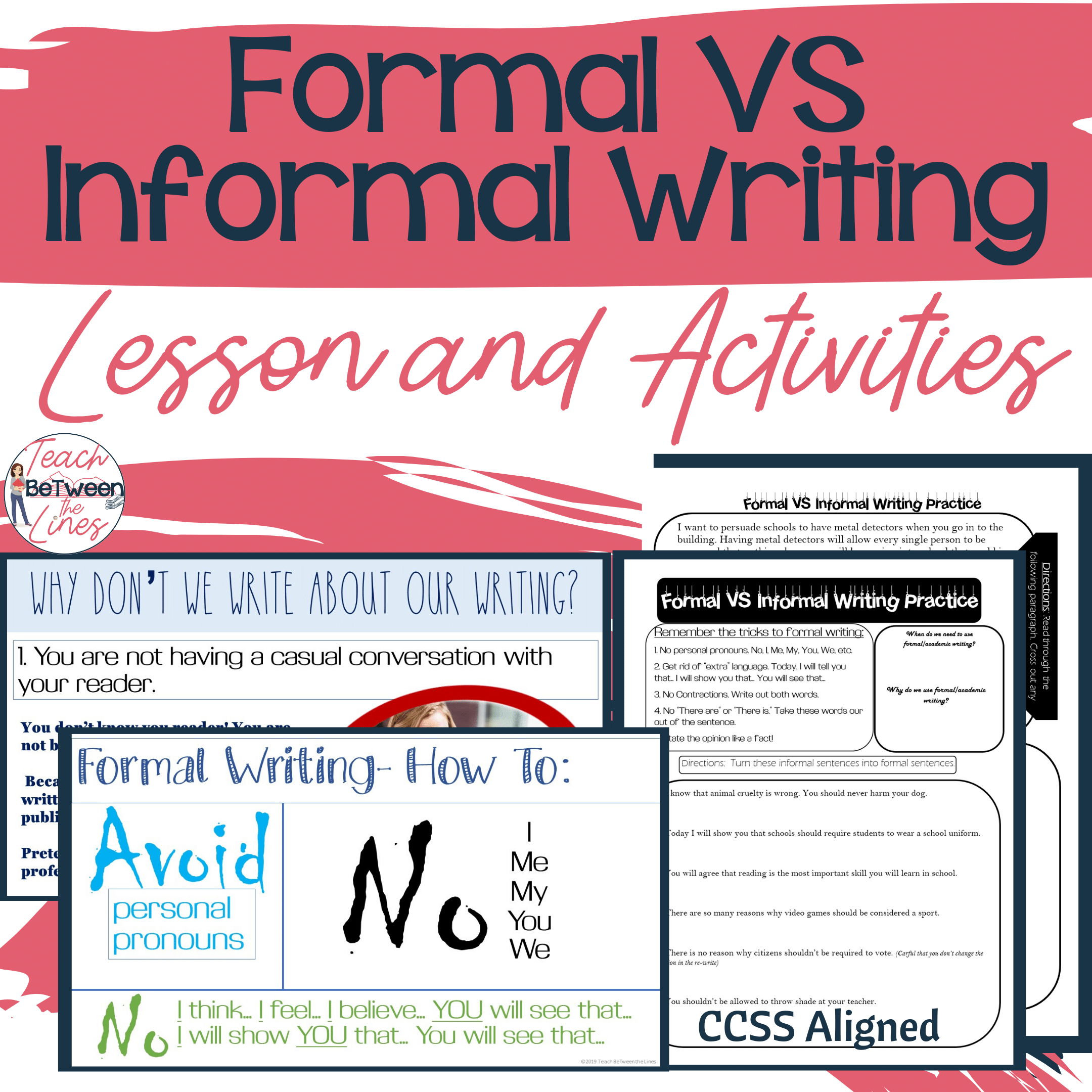Do you ever feel like you’ve got a one-track mind? As an English teacher, I feel like I tend to focus on just one thing at a time. If we are teaching sentence patterns, I’m all in on sentence patterns, or if we are learning citations, I am laser-focused on citations. Some people may praise my dedication and focus, but I’m not sure my one-track mind is always a good thing because while I may understand the why and how about the lesson or rule I’m teaching on, but sometimes students need to be taught the why and how explicitly.
When we first start teaching students about formal language, we focus on all the “don’ts.” Don’t use 1st person pronouns in formal writing. Don’t use ‘there is’ or ‘there are’ in formal writing. Don’t use contractions in formal writing. We are all guilty of using this vocabulary. We depend on our firm insistence to NOT perform any of these evil acts as enough information to keep students from these formal writing major faux pas. However, ‘good’ marketing strategy isn’t about the ‘what.’ We can’t just tell students not to do something; we have to show them why it matters.
If you get the chance, watch Simon Sinek’s Ted Talk called “How Great Leaders Inspire Action.” In the talk, he explains how some of the most significant companies in the world do their marketing. He calls it the golden circle. At the center of the circle is ‘What,’ the next ring is ‘How,’ and the outer ring is ‘Why.’ According to Simon, the most exceptional marketing campaigns always start with the outside circle then move toward the center.
Now, we don’t often think of ourselves as marketing gurus, but great teachers have to be. We can’t just expect students to buy-in to our lessons; we have to show them why our lessons matter, and why the rules exist.
In my formal writing unit, I do have a Formal Writing Guide handout for students that goes through all the verbiage to avoid when attempting to write formally. This Formal Writing Guide is gold in my classroom, as highly cherished as any worksheet could wish to be, but that guide is only valuable because of the lessons and activities that lead up to it. The worksheet is the ‘what’; however, it won’t bear any weight unless students investigate the ‘why’ and ‘how’ of formal writing first.
WHY: The value of comparison
I have a secret for teaching MLA formatting. Are you ready? Teach APA formatting. When I started teaching formatting to students, I realized that they believed as long as they had a citation after a sentence, it was correct. It wasn’t until I had them start digging into the difference between MLA citations and APA citations that they realized the nuances of citations, and why each form of citing had different elements of value. (Example: APA formatting values dates because it is the formatting style of researchers, so dates are listed right after the author’s name.)
When teaching formal writing, students have to be able to compare formal and informal examples to understand how small details affect the meaning, connotation, and mood. Asking students to investigate the differences between formal and informal writing is effective because students internalize the ‘why’ for the rules. To reinforce the ‘why,’ I put them through a series of activities and bell ringers to focus on word choice.
Below, I’ve included an example of one of my bell ringers.
Consider the following two passages. Identify the appropriate audience for each passage.
Passage #1: Dude, Leah just threw so much shade on Mark right now. Low key, she needs to chill. The tea is boiling hot.
Passage #2: There is considerable concern over Leah’s recent behavior. She has been observed targeting her peers, specifically a student named Mark. It has been recommended that Leah take some time away from school to think about her behavior choices. At school, this type of behavior cannot be allowed by district administrators or teachers.
HOW: The value of writing with a specific audience in mind
When I begin teaching on formal writing, I use bell ringers that challenge students to consider how an intended audience can affect how the written message is sent (like the one above). Daily bell-ringers that ask students to focus on the intent and audience of the message by dissecting word choice helps them to see the difference between formal and informal language. However, when I want them to start thinking about how their writing becomes more formal, we focus on the audience.
Using discussions, writing exercises, and examples, I take students on a journey to discover their own tendencies. I ask them questions such as ‘how does your language change when you are talking to your friends versus when you are talking to a parent.’ Through discussion, students identify the tendencies of themselves and their peers, and they begin to recognize ‘how’ word choice plays into their messages.
From there, I continue to put students into writing situations that force them to consider different audiences.
If you are looking for some additional ways to use your audience, these are a few activities from my arsenal that you may find helpful.
Change the Address: I begin by asking students to write a message to their parents about their progress in your class. Then I take them through a lesson that requires them to rewrite the same message changing the word choice to be appropriate for a different audience (another teacher, their peers, their siblings, their grandparents, a college rep, etc.).
Guess Who: I create notecards with a variety of potential audience members (one audience per card) and hand out a notecard to each student. Then I develop a slide or handout detailing a message (the who, what, where, why, how) and ask students to write the message to the audience on their card. After all the students have written their version of the message, we try to guess who their audience member was.
Slang Change: When we discuss word choice, one of my projects is asking students to consider different slang and when it is appropriate. I ask my students to rewrite the same message for multiple platforms. (Note: this should all be in one document). Students write their message as a text, a personal journal entry, for Instagram or Facebook, as a tweet, dialogue, a paragraph example in a college application, or interview response question. After the exercise, we group up and discuss the different choices that were made based on the platform or person with whom we intended to share the information.
Once we’ve spent time focusing on the ‘Why’ and ‘How’, my students are finally ready for the ‘What’. Time to get out the Formal Writing Guide!
The activities and suggestions in this post will help with your daily implementation and teaching of formal writing, but If you are interested in investigating my Formal Writing unit in more detail, check out the links below!




